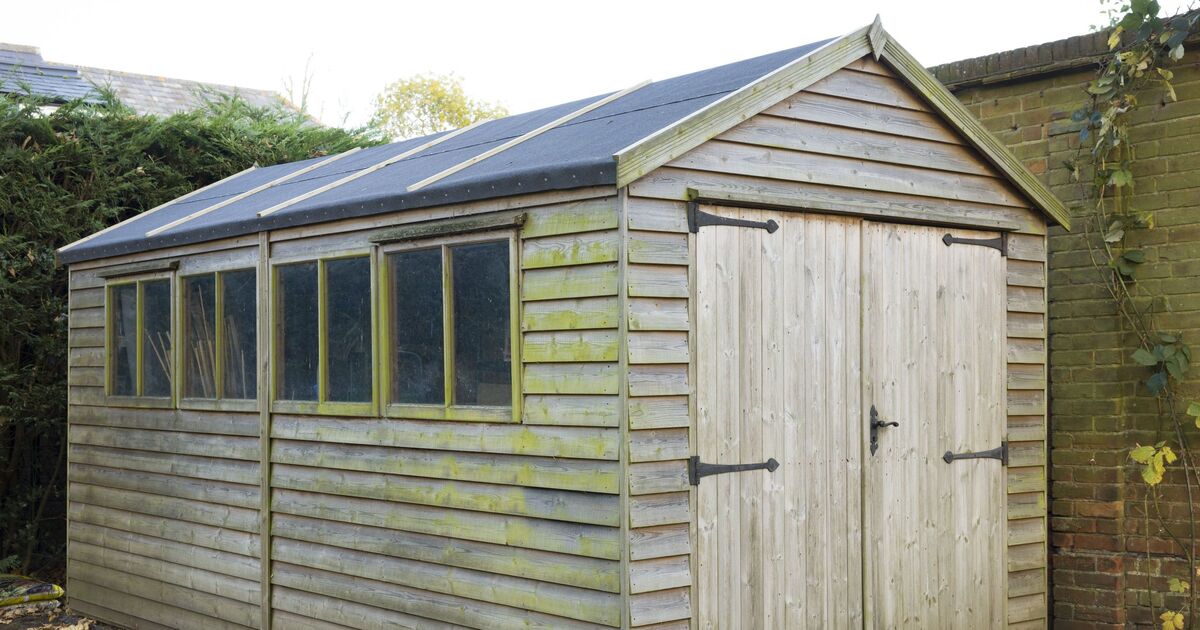People are being advised to check their outside buildings for hidden mould and dampness. If homeowners leave the task too late it could cause further problems down the line.
Thankfully experts at GardenBuildingsDirect have come to the rescue and shared advice on how to stop mould from growing in garden sheds this winter.
During colder months mould seems to thrive with condensation and poor ventilation adding to the common problem.
According to Homebrite Windows, over half (58 percent) of privately rented homes in England are dealing with dampness and mould. This equals 2.7 million households.
Some of the things homeowners should look out for when it comes to mould include “discoloured spots on the inside walls and ceilings of the shed”.
Meanwhile, a musty smell, damp patches, staining and peeling could also signal there’s mould growing.
Laura Bamborough from GardenBuildingsDirect said: “Mould can cause significant damage to your shed and the items stored inside. It thrives in damp, poorly ventilated spaces, which can cause wood rot, rust, and structural damage.
“Good ventilation is key in preventing mould growth and it’s important to ensure air can circulate freely. Try leaving doors or windows open to provide airflow as a starting point. But one of the most important aspects is to make sure any wood is treated so that bacteria can’t grow on and inside it.
“Keep the shed dry by repairing leaks, checking the roof is in good condition and sealing any gaps and cracks. Taking action early will prevent the problem from getting worse and stop any long-term damage.”
GardenBuidlingDirect has shared useful tips for preventing mould in your shed:
Improve ventilation:
Getting a good flow of air through the shed will help prevent mould. If the shed has windows, open them or install vents to reduce humidity levels.
Check the roof:
Shed roofs take a battering from the elements so check regularly for any signs of damage or missing materials. If there are problems, homeowners may be able to patch them up, otherwise the shed may need re-roofing.
Protect your shed:
Treating the shed will help protect it from the weather, wood rot, mould and algae. Pick the preservative best for you and make sure to apply it annually to keep your outdoor building in good condition.
Dry items before storing:
Make sure items are dry when putting them away to avoid mouldy patches. Keeping tools dry and disinfected as well as other outdoor items will help avoid mould formation.
Prevent leaks:
Check the shed regularly for any cracks or gaps. To fix, use a sealant or apply waterproofing to the joints.
Moisture absorbers:
Place moisture absorbers around the shed to prevent dampness and mould. If the individual has a dehumidifier they could run it in the shed or summerhouse but make sure to have a secure and safe power source.
Rising damp:
To stop rising dampness, a barrier needs to be built between the shed floor and the ground. That could be concrete slabs or gravel.
Insulation:
Add insulation to the shed to keep it at a regular temperature. This will help to limit any moisture build-up.
Plastic storage:
Think about how to store items in your shed. Sealing garden toys, cushions and smaller items in plastic containers will protect them from the elements. Plastic is resistant to moisture so an obvious storage choice.












